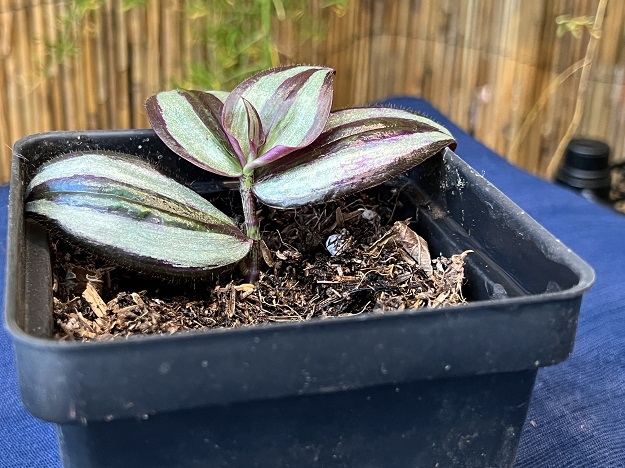
Whether your indoor garden has outgrown its location, or you are looking to expand your garden, a bit of pinching, pruning, or propagating may be the answer. Grooming houseplants keeps your indoor garden looking its best and plants contained to the available space. You can use some of the trimmings to start new plants.
Give plants with long, leggy stems a pinch. Removing a small or large portion of the growing tip encourages the plant to form more branches and compact growth. Pinching removes a growth hormone produced in the stem tip called auxin. This hormone encourages upward growth of the stem. Removing the stem tip reduces the auxin and allows more branches to develop along the stem.
A soft pinch removes just the uppermost portion of the stem with developing leaves and the stem tip. A hard pinch, more like pruning, removes the tip and several inches of the leafy stem. These stem pieces can be used to start new plants.
When pinching and pruning your houseplants make the cuts just above a set of leaves. The plant remains relatively attractive while you wait for new leaves and stems to grow. Avoid leaving stubs by making cuts elsewhere as these detract from the plant’s appearance and can create entryways for insects and disease.
Houseplants can be propagated in several different ways. Avoid propagating patented plants protected by patent laws. These laws are designed to protect the investment of the plant breeder. Respecting patent laws allows companies to continue breeding improvements into plants for all of us to enjoy in the future. This article describes nine different ways to propagate houseplants.
Use leaf stem cuttings to start a variety of houseplants like inch plants, philodendron, pothos, dieffenbachias, dracaenas, jade plants and many more. Use a sharp knife, snips, or bypass pruner to cut three- to six-inch-long pieces from firm, mature, non-woody stems. Remove the lowest leaf or two that will be buried in the potting mix. This is where new roots will form. If you have had trouble rooting cuttings in the past, try using rooting hormone labeled for use on houseplants. It contains fungicides to fight disease and hormones to encourage root development.
Root cuttings in a small container filled with vermiculate or a well-drained potting mix. Make a hole in the mix, insert the cut end, and gently push the potting mix around the stem. Loosely cover the potted cutting with a plastic bag left open at the top. This increases the humidity around the cutting to compensate for the lack of roots. Set the container in a bright location out of direct sun for several weeks to allow the roots to develop. Give the stem a gentle tug to see if roots have formed. Move the rooted cutting into a container filled with well-drained potting mix, place it in a location with the proper amount of sunlight and water as needed.
You’ll be amazed at how a bit of grooming and propagating can perk up a tired indoor garden. Share or trade extra rooted cuttings with family and friends so each of you can grow your indoor garden and memories.
Melinda Myers has written more than 20 gardening books, including Small Space Gardening. She hosts the “How to Grow Anything” DVD series and the Melinda’s Garden Moment TV & radio segments. Her website is MelindaMyers.com.
Photo provided by Melinda Myers.
Related Articles & Free Vermont Maturity Magazine Subscription

How to Identify and Eliminate Fungus Gnats on Houseplants
How to Keep Gardening After the First Fall Frost







Comment here